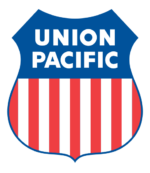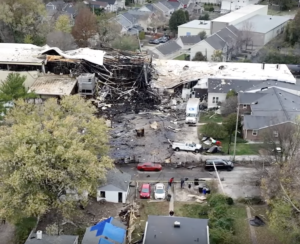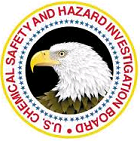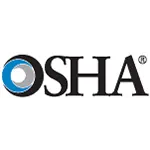CLICK HERE to Renew your Membership
CLICK HERE for a NEW Membership
CLICK HERE to see eligibility requirements for FREE Membership
If you have any questions, please contact me
SAFTENG has:
- Over 18,000 categorized unsafe acts/conditions and accident/injury photos
- Over 1,500 ppt's & doc's in the SAFTENG Library
- Over 4,000 Technical Articles on Process Safety, Emergency Response & OSH topics
- Over 450 videos (those not allowed on YouTube Channel)
Many THANKS to my NEW Members and those who CONTINUE to support SAFTENG:














November 20, 2024
Last week, we saw the devastation of a catastrophic failure of a pressure vessel (PV) in Louisville, KY. We still do not know the cause of this failure, just that it was a “cook vessel #6. SAFTENG members can see my breakdown of the photographic evidence available from the Courrier Journal (local Louisville newspaper). But this video is a “marketing” video from the company’s...
Read More
November 19, 2024
Respondent operates a seafood processing and distribution facility in New Bedford, Massachusetts that uses anhydrous ammonia in a refrigeration “process” as defined by 40 C.F.R. § 68.3, in a series of interconnected pipes and vessels at the Facility (the “Process”). According to the respondent’s 2012, 2013, 2014, 2015, and 2016 Reporting Year Tier II reports, the facility maintained an average daily...
Read More
November 19, 2024
ATF Louisville said it has definitively identified the origin of last week’s deadly plant explosion. The investigation led them to the origin of the explosion: Cooking Vessel No. 6 on the South side of the facility. They can say that the vessel failed definitively… it was likely an issue with overpressurization. Some of that vessel was actually found on Payne Street after the explosion....
Read More
November 19, 2024
Today the U.S. Chemical Safety and Hazard Investigation Board (CSB) announced that it is sending a team of investigators to Louisville, Kentucky, to investigate the fatal explosion that occurred last week on November 12, 2024, at the Givaudan Sense Colour facility in Louisville, KY. Two employees were killed and eleven others were injured by the explosion. According to the company, in addition to the...
Read More
November 18, 2024
On May 29, 2024, at 3:22 p.m., Employee #1, 26, was attempting to rescue a fellow employee who had been overcome by hydrogen sulfide (H2S) gas in an underground pump house. Prior to this incident, multiple coworkers had been working in the pump house and were exposed to H2S gas emitted from a pipe containing water with by-products from sugar beets, dirt, mud, and chemicals used in water treatment....
Read More
November 18, 2024
Another example shows us that serious hazards can be found OUTSIDE of chemical processes, and applying the Line Break/Equipment Opening Procedure and Permit to these hazards could go a long way in controlling these recognized hazards. DEFINING and QUANTIFYING “hazardous energy” sources is STEP 1 in ensuring the process/system can be safely opened. Step 2 is applying LOTO to these tasks...
Read More
November 18, 2024
A review of BLS data shows there were 15,400 work-related hearing loss illness cases in 2022. Of those cases, approximately 68% occurred in the manufacturing industry. The incidence rate of hearing losses in wood product manufacturing was 23.1, compared to 1.3 for all Private Industries. The incidence rate for hearing losses in poultry processing was 24.5, compared to 1.3 for all Private Industries....
Read More
November 18, 2024
What GAO Found Three (3) major hazards caused most of the injuries and illnesses in general warehousing (which includes e-commerce warehouses) and the companies that deliver these orders to consumers (“last-mile delivery”), according to Bureau of Statistics (BLS) data. Overexertion and bodily reaction, the most common hazard (see figure), can cause musculoskeletal disorders, such as tendonitis or back...
Read More
November 18, 2024
The following is a brief description of the collection of information requirements contained in the 13 Carcinogens Standard: establishing and implementing a medical surveillance program for workers assigned to enter regulated areas; informing workers of their medical examination results; and providing workers with access to their medical records. Further, employers must retain worker medical records...
Read More
November 17, 2024
This week, a LinkedIn post by Ed Davidson garnered some comments that disagreed with my comments about how the video should be used to show HOW NOT to respond to a fire that is (IMPO) beyond its incipient stage. As I had stated in my comments, some will celebrate the actions of those involved rather than understand the risks they took. Most of these comments were by people outside the safety profession,...
Read More
November 16, 2024
As an accident investigator this has to be one of my favorite books. Of course, I am a massive fan of Dekker’s books and videos. He has a newer book on this topic that is also a MUST-READ for safety professionals and accident investigators. After nearly 16 years as a safety professional in the chemical industry, I came to the realization that errors, mistakes, and violations (James Reason’s...
Read More
November 16, 2024
Lots of folks find it hard to believe when I discuss Minimum Ignition Energy for flammable vapors/gases and Combustible dust. When we get “shocked” by a door handle in the wintertime, and we can feel it, that is around 10-15 mJ. Most common flammable gases and vapors now have MIE’s less than 1.0 mJ.
Watch how static electricity lights the gas stove…
DO NOT TRY THIS STUNT!
Read More



















